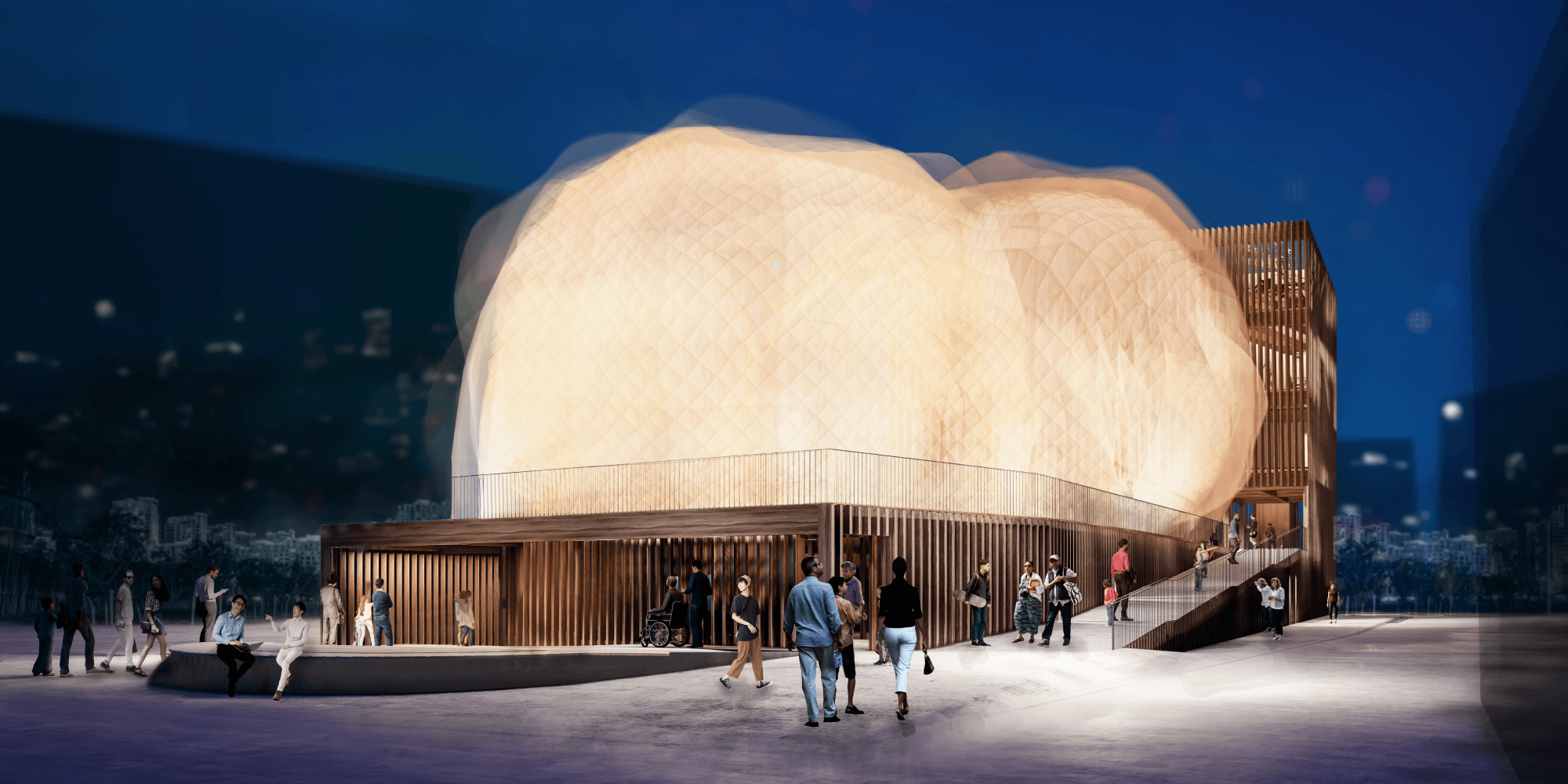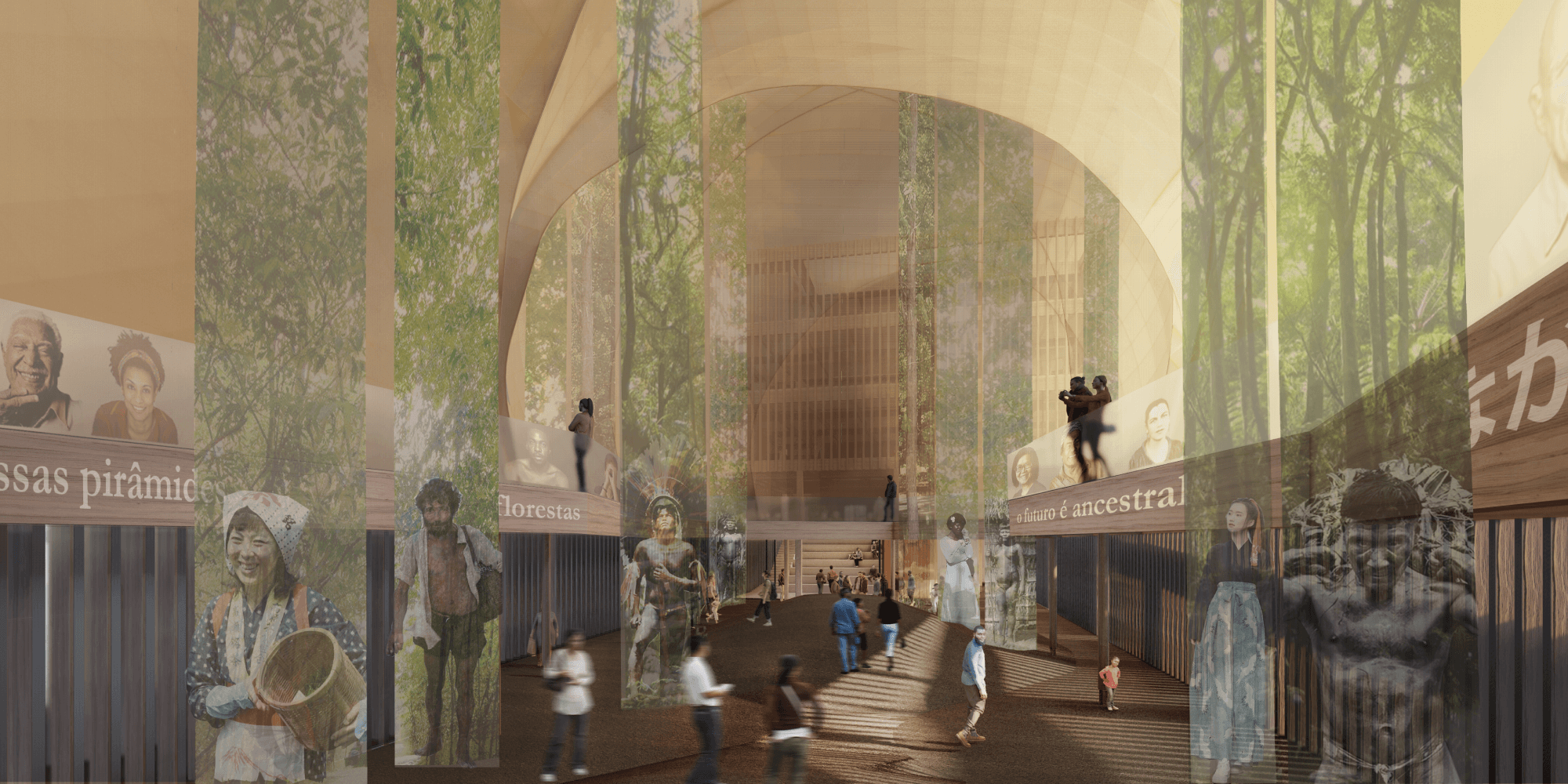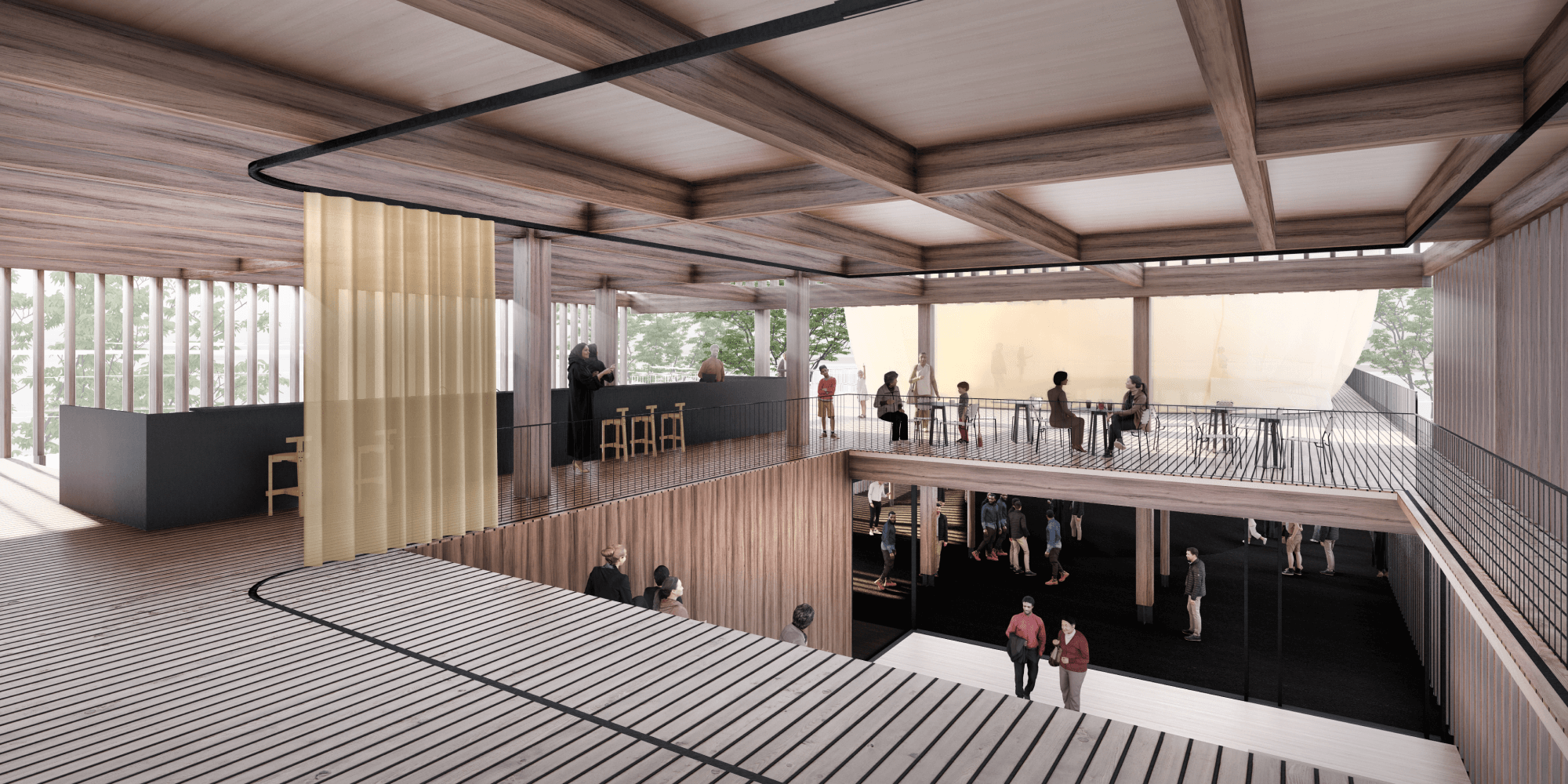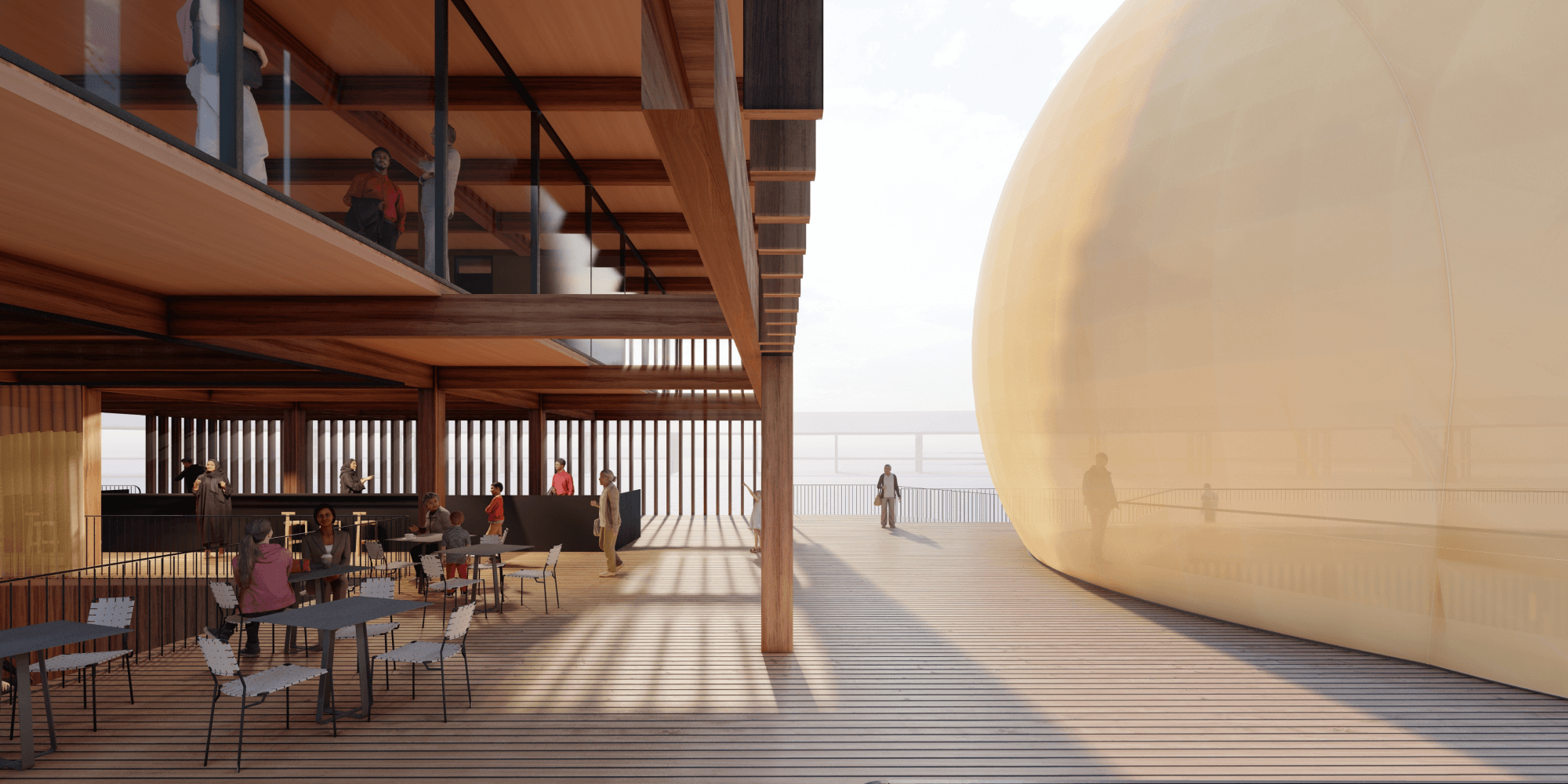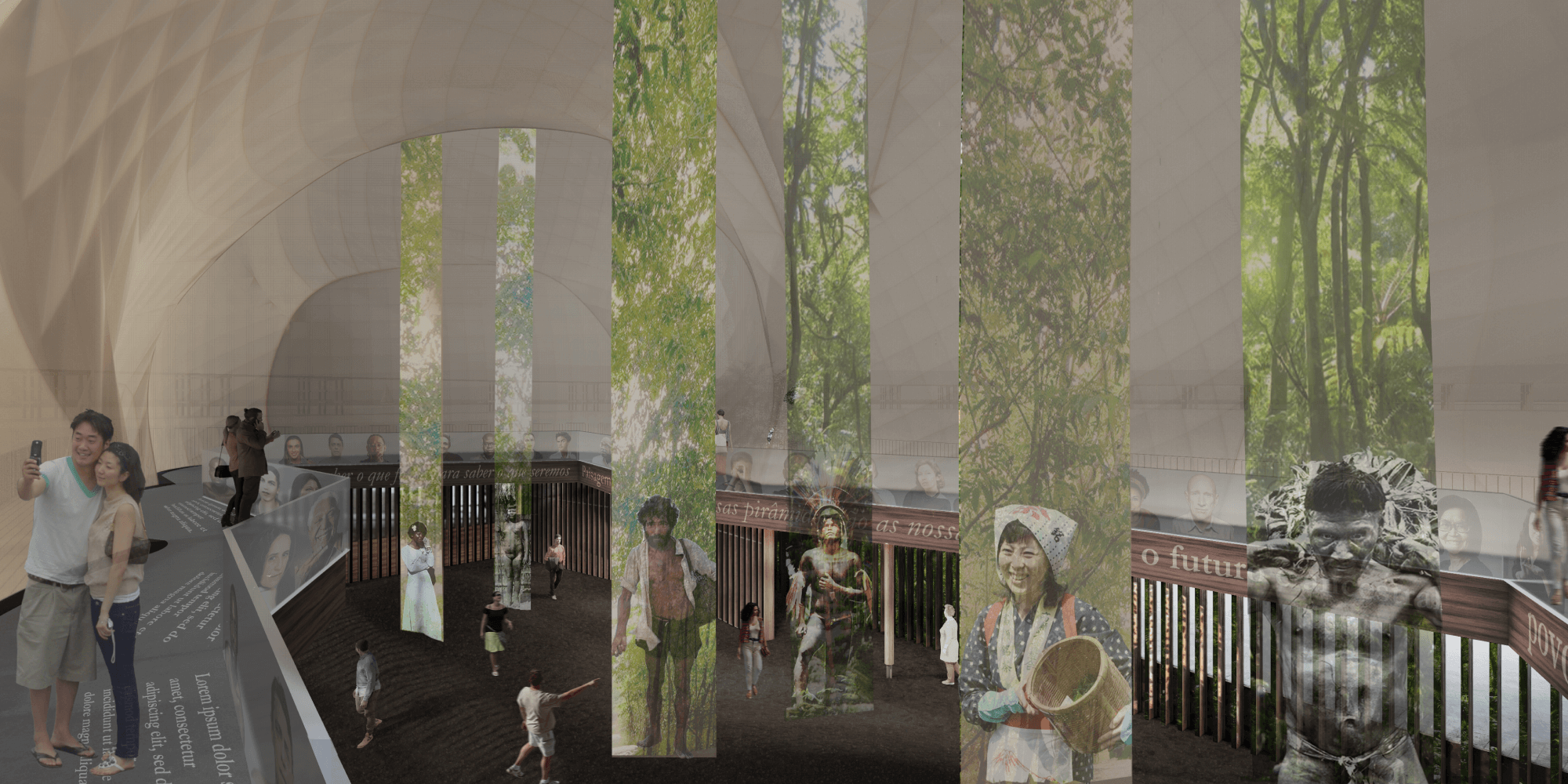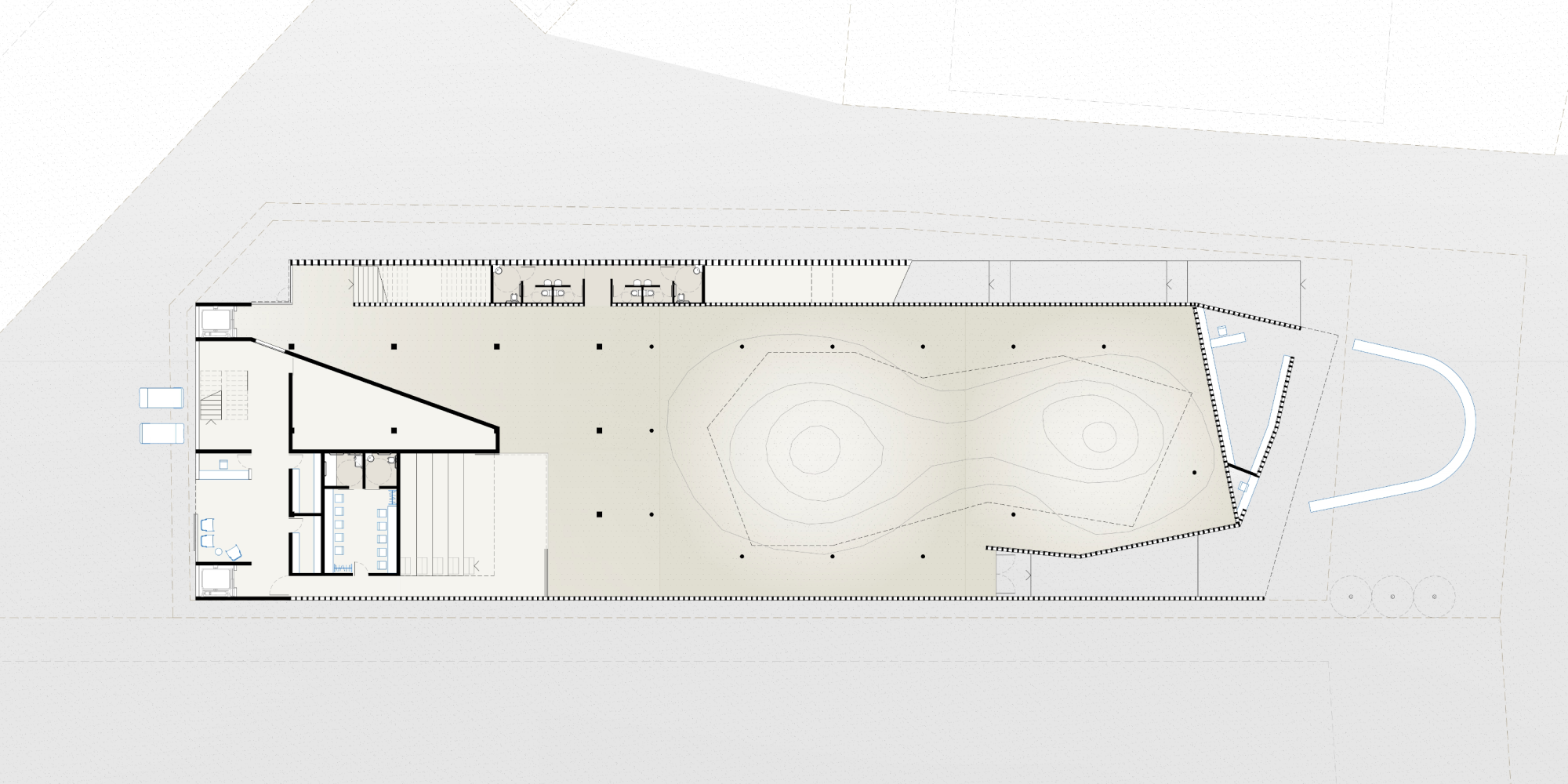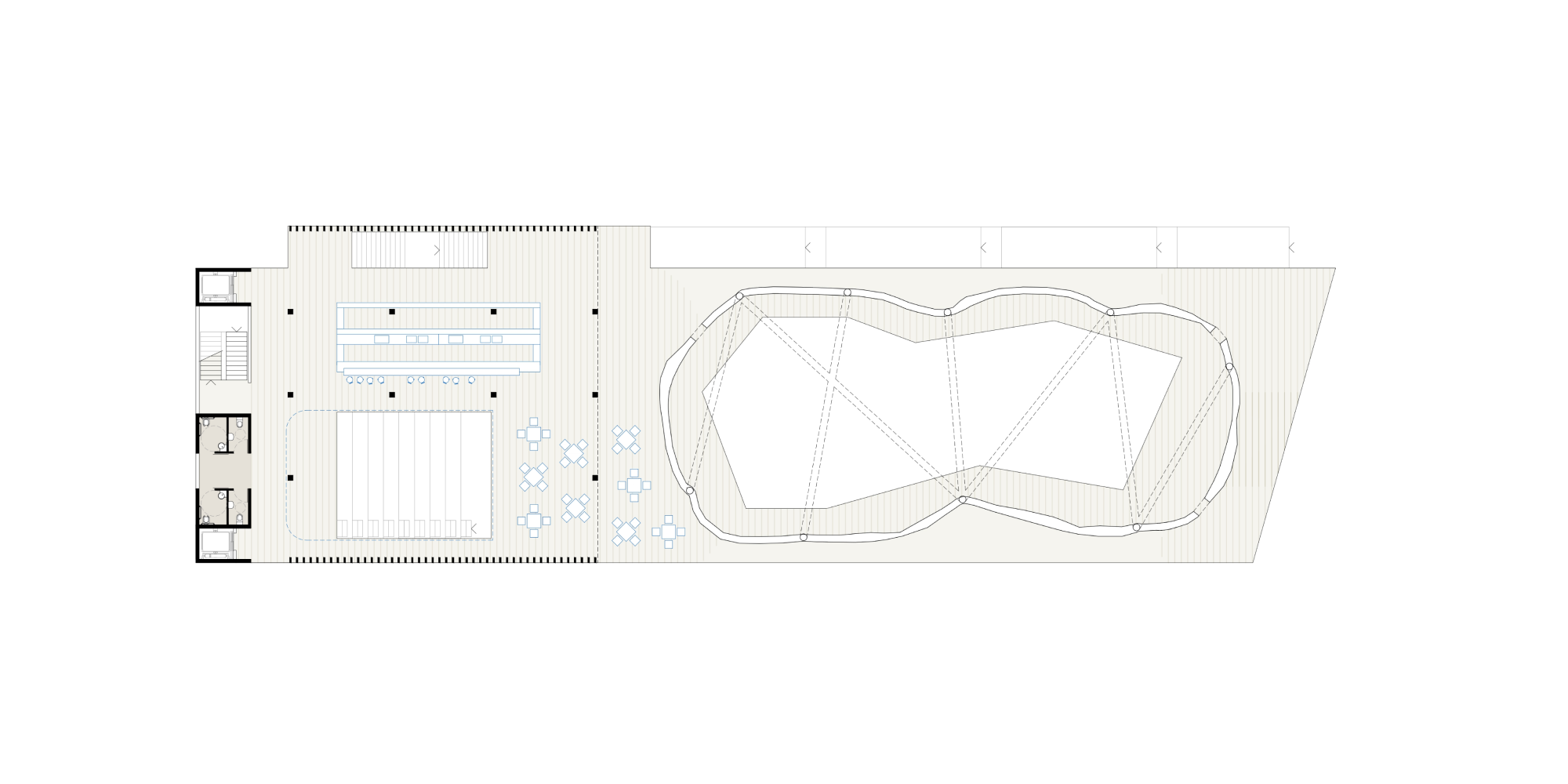The Amazon as a biome built by human occupation, diverse and multicultural, is the basic concept behind the exhibition Uhiri | 森林 - a title made up of the Yanomami and Japanese words for "forest". Recent archaeological research has shown that the Amazon is not as untouched as people imagine: its exuberance is also the result of management carried out thousands of years ago by the original peoples of Brazil and, more recently, by immigrant communities - among them, the Japanese, responsible for implementing the agroforestry system, which integrates agriculture with the forest in a sustainable way.
It is often said that the Amazon is "the lung of the world". The architectural and exhibition design proposal for the Brazil Pavilion uses this idea as a central element, in the form of an inflatable structure that can be seen from a distance, which breathes and inspires, placing the building in continuous movement, as well as exhibition elements, such as large strips of transparent fabric, hanging from this structure, on which images of people from different origins, portrayed in full body, will be projected. The brise-soleil walls add transparency to the structure and provide integration between the inside and outside of the building - Brazil, open and welcoming to the visitors of Expo Osaka 2025.
The entire exhibition will relate the importance of multicultural human presence for the conservation of the natural environment, from ancestral experience to contemporary examples of positive coexistence between people and Brazilian biomes. Also included are great Brazilian names linked to scientific, economic, educational, cultural and political development. The aim is to show that the future of the planet can and should look to the past as a source of inspiration, and to the future as an antenna capturing new technologies, uniting tradition and modernity towards sustainability. If the forest is the source of human life, the Brazil Pavilion will show that human life can also be the source of the forest.

